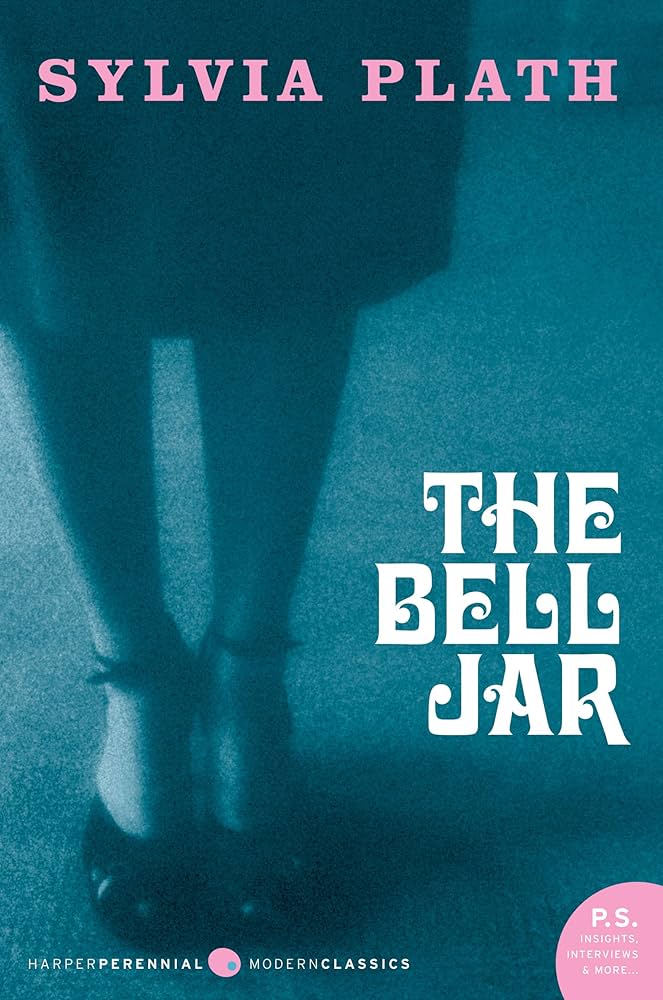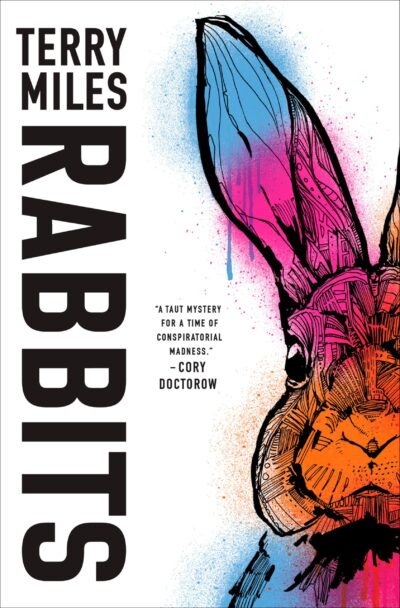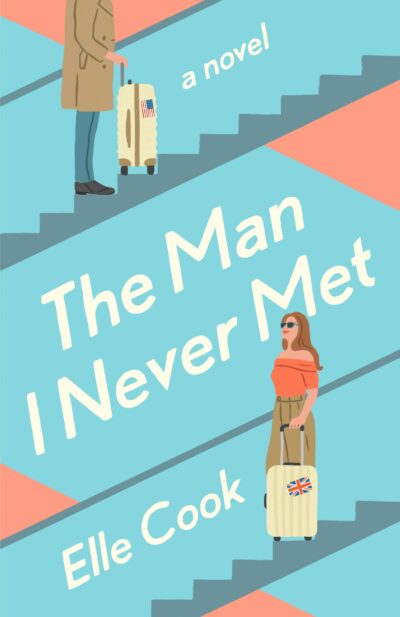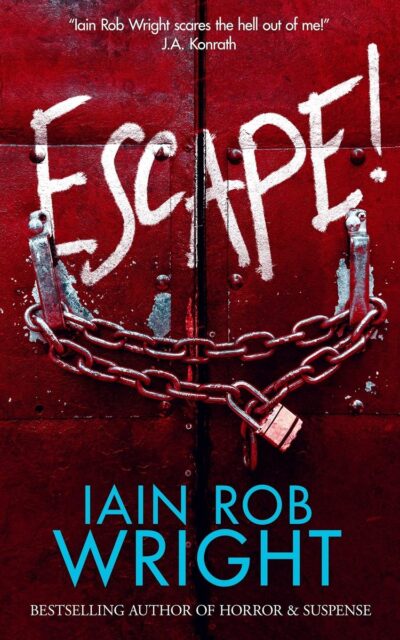I was initially drawn to The Bell Jar when I was researching for the second assignment we had, but I wasn’t sure I wanted to visit the subject matter at that time. When I was searching for a book for this assignment, I wanted to find something easy to read and lighthearted, but the book stuck out to me once again so I decided to give it a go this time.
I read poetry by Sylvia Plath in high school and I was interested in her life and death then, but I didn’t immerse myself very much. Knowing what I know about her life influenced the way I experienced the story, and I was well aware about the heavy biographical influence on this fictional story. Ultimately I think the connection between Plath and the main character, Esther Greenwood, was what made the story for me.
Describing My Experience
I had a wide array of feelings throughout this story because it was one that paralleled my life in so many ways. I was mostly appreciative of the story being written about being a 19 year old girl. I am a firm believer that young women have a perspective on the world that is truly unique and more insightful than any other. There is a combination of the naivety of a youthful spirit and the bitterness of having one foot in adulthood that manifests into the most beautiful art. From the moment I opened the book to the moment I read the last page, I felt connection. While I didn’t necessarily see myself in Esther entirely, I still felt connected to her because of her experiences and the way she described them.
“I was a terrible Dancer. I couldn’t carry a tune. I had no sense of balance, and when we had to walk down a narrow board with our hands out and a book on our heads in gym class I always fell over. I couldn’t ride a horse or ski, the two things I wanted to do most, because they cost too much money. I couldn’t speak German or read Hebrew or write Chinese. I didn’t even know where most of the old out-of-the-way countries the UN men in front of me represented fitted in on the map.
For the first time in my life, sitting there in the soundproof heart of the UN building between Constantin who could play tennis as well as simultaneously interpret and the Russian girl who knew so many idioms, I felt dreadfully inadequate. The trouble was, I had been inadequate all along, I simply hadn’t thought about it.
The one thing I was good at was winning scholarships and prizes, and that era was coming to an end.”
What I connected with so much in this book was the way Esther would just spit information out, perfectly describing the situation she was dealing with. Everything she says is in lengthy lists like this quote, and sprinkled in there are these tragic sentences which are included in such a matter of fact way that they don’t even stand out. I think I connected her way of describing things in that they don’t even phase her because she’s so self aware.
The next experience I had came later in the book, when Esther went home following her success in New York. When she returns home she faces academic rejection, and at the same time she quickly finds herself falling into a negative space. She begins to struggle with her mentality which affects her writing, and ends up becomes more distressing to her than anything else. There is also this overarching lack of support from her mother throughout the book. This struggle is emphasized for her because her mom doesn’t cause issues necessarily, but she makes hard moments worse. For me, this was double identification. While I felt connected to Esther during her time in New York because of the writing style Plath used, I found identification within the context of the conflict itself once she returned home.
“It seemed silly to wash one day when I would only have to wash again the next.
It made me tired just to think of it.
I wanted to do everything once and for all and be through with it.”
I felt such understanding for what she was going through even when it wasn’t written out in great detail. I understood the things she was going through and the way she felt about it as if it were a memory of my own. There is an element of this book that is juxtaposed in that it’s very direct, but you have to read between the lines to understand it. For me, understanding the between the lines moments aided my feelings of double identification even more. Throughout the middle of the book she’s so apt on her life being over and done while simultaneously wishing for her old self back, which was an experience I related to her with within the same context of her life. I wish the book would have touched on this more because it’s such a complex feeling, and the moments it occurred in the book resonated with me.
At the end of the book I felt gratification for Esther, who seemed to overcome this mentality she believed she wouldn’t be able to shake. She learned and grew and I was confident in her future and was happy she got the ending she worked so hard for. However, this is where I felt conflicted in the story because I connected it back to Sylvia Plath. Plath wrote this novel two years before she took her life. There are so many parallels between Esther and Sylvia, but to me it seemed like Sylvia gave her the ending that it felt like she wanted for herself. While that might not be true, Esther felt like a silver lining character in Plath’s life, and so I struggled to feel true gratification at the end of the book because of that connection.
“My mother’s face floated to mind, a pale, reproachful moon, and her last visit to the asylum since my twentieth birthday. A daughter in an asylum! I had done that to her. Still, she had obviously decided to forgive me. “We’ll take up where we left off, Esther,” she said, with her sweet, martyr’s smile. “We’ll act as if all this were a bad dream.”
A bad dream.
To the person in the bell jar, blank and stopped as a dead baby, the world itself is the bad dream.
A bad dream.
I remembered everything.”
There is an element of this book that is so meta because it’s biography and fiction laced together. The idea that Esther knows she is capable of greatness but is aware she won’t get there because she’s standing in the way of herself bleeds into Plath’s life and ultimately her death. I think there is something so poetic about seeing the hyperawareness Plath had and how tragic her thought process was, yet she could turn it into the most eloquent writing. And despite her knowing all this about herself, it proved to be not enough to allow her to escape her own mind. When I left this story, I couldn’t help but think about Sylvia Plath instead of the fiction of the story itself because she’s so intertwined within the tragedy of this story.
Narrative Technologies
Part of the importance of this story is the use of I Voice, without that the elements of the story would be much less complex. Without the complex thought processes of Esther, I don’t think I would have found as much solace in the storyline because she wouldn’t be the one explaining the extreme moments in her life.
“It would take two motions. One wrist, then the other wrist. Three motions, if you counted changing the razor from hand to hand. Then I would step into the tub and lie down.
I moved in front of the medicine cabinet. If I looked in the mirror while I did it, it would be like watching somebody else, in a book or a play.
But the person in the mirror was paralyzed and too stupid to do a thing.
Then I thought maybe I ought to spill a little blood for practice, so I sat on the edge of the tub and crossed my right ankle over my left knee. Then I lifted my right hand with the razor and let it drop of its own weight, like a guillotine, onto the calf of my leg.
I felt nothing. Then I felt a small, deep thrill, and a bright seam of red welled up at the lip of the slash. The blood gathered darkly, like fruit, and rolled down my ankle into the cup of my black patent leather shoe.
I thought of getting into the tub then, but I realized my dallying had used up the better part of the morning, and that my mother would probably come home and find me before I was done.
So I bandaged the cut, packed up my Gillette blades and caught the eleven-thirty bus to Boston.”
This moment in the book is horrific, but for some reason the fact that it comes from her perspective makes it more tolerable. Because we’ve gotten to know Esther and have seen her thought process throughout the novel, it almost makes better when she explains this situation. At the same time, it is sort of haunting in the way she describes this moment without any emotional feelings. I think this adds to the complexity of the story and ultimately I like the way these moments play out within the writing.
The next technology I want to highlight is Poetic Language. Although I’m not sure this is the exact technology to describe it, it’s the best one I could find. The book has a unique set up in terms of line spacing. I noticed it throughout the book, that certain sentences stand alone in a separate line. This elicits specific emotions based off the sentence itself, and it was especially apparent to me that Plath wanted us to sit with certain lines a little bit longer than others.
I started to swim, a modified dogpaddle, keeping my face toward the rock. Cal did a slow crawl. After a while he put his head up and treaded water.
“Can’t make it.” He was panting heavily.
“Okay. You go back.”
I thought I would swim out until I was too tired to swim back. As I paddled on,
my heartbeat boomed like a dull motor in my ears. I am I am I am.That morning I had tried to hang myself.
I had taken the silk cord of my mother’s yellow bathrobe as soon as she left for work, and, in the amber shade of the bedroom, fashioned it into a knot that slipped up and down on itself. It took me a long time to do this, because I was poor at knots and had no idea how to make a proper one.
Then I hunted around for a place to attach the rope.
This part of the story stuck out to me, because the paragraph before is about Esther trying to down, yet I wasn’t startled until the next line, which is so blunt that I paused on that line for more than just a moment. The book uses a mixture of long paragraphs with no commas and no breaks to single lines, which fits within poetic language and is an incredibly effective format of writing.
The last narrative technology that allowed me to feel the connection I felt in the first place is Stream of Consciousness. This occurs throughout the book, and I love every minute of it. A lot of times it just neutral observation made by Esther, but it also occurs in good and bad feelings she has. It’s just a constant flow of her thoughts, chaotic but pinpointed simultaneously.
“I thought the most beautiful thing in the world must be shadow, the million moving shapes and cul-de-sacs of shadow. There was shadow in bureau drawers and closets and suitcases, and shadow under houses and trees and stones, and shadow at the back of people’s eyes and smiles, and shadow, miles and miles and miles of it, on the night side of the earth.”
Moments like this occur throughout the story that just allow you to connect with Esther’s experience without necessarily being major plot points. Sometimes it’s a nice break from the storyline, or sometimes it’s a telling moment of the overarching story. However, this stream of consciousness develops her character more and more each time, which allows a lot of connection to be had with Esther.
Conclusion
There are many books that have stuck with me in life, and The Bell Jar will be one of them. I am so grateful to have read this book at my age, I think a lot of the nuance would have been lost on me if I had read it earlier or later. While the subject matter was a struggle to read, the beauty in the story shines through just as much. It’s not full of lovable characters, or a perfectly happy ending, but it left me with a satisfaction and a connection that I will cherish.
Works Cited
Plath, Sylvia. The Bell Jar. Harper Perennial. 2005.
Cover Art for the Bell Jar. Harper Perennial. All Rights Reserved.




